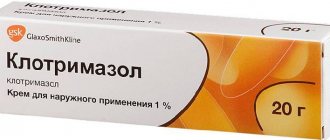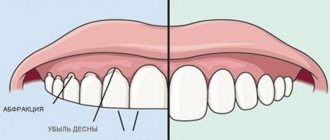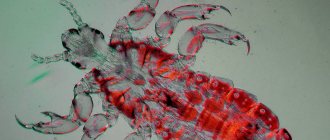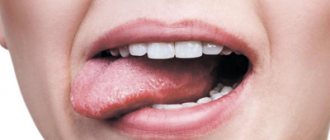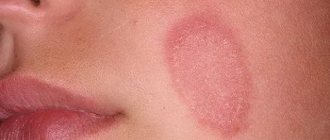Candidiasis is a lesion of the mucous membranes and skin caused by yeast-like fungi such as Candida, which occurs in men and women.
The reason for the development of candidiasis can be either the introduction of this fungus from the outside or the activation of one’s own candida, which normally live on the surface of the mucous membranes of the gastrointestinal tract and genitals in small quantities.
Depending on this, the diagnosis of this infection and further treatment of candidiasis are based.
Main causes of candidiasis
- Infection with fungi through sexual contact. — Candida can get on the genitals, rectum, oropharynx, lips of a healthy sexual partner when his mucous membranes come into contact with the secretions of an infected person. This happens during classic vaginal contact, oral and anal sex.
- Long-term antibiotic therapy. — In this case, the balance between bacteria and fungi Candida albicans is disrupted, which results in active proliferation of fungi against the background of a decrease in the number of normal bacteria. It occurs most noticeably in the intestines and vagina of women.
- Treatment with immunosuppressants and cytostatics. — The immune system is suppressed, which ceases to control the proliferation of fungi.
- Diabetes mellitus - an increase in blood glucose levels leads to high levels of glucose in the urine and mucous membranes, which is a favorable environment for the spread of candida.
- Intestinal dysbiosis associated with a decrease in the number of bifidobacteria and lactobacilli, which normally inhibit the activity of fungi.
- Frequent vaginal douching, especially with the use of antiseptics, also destroys normal microflora and creates a favorable situation for the growth of fungal flora.
- Increased sweating in the area of the folds of the skin of the groin, perianal, axillary, under the mammary glands.
- Some types of candida are capable of multiplying on the surface of vegetables and fruits and infecting the skin and nails of people working with them.
The question arises - what is candidiasis? A sexually transmitted infection, or some kind of disorder within the body?
Candidiasis symptoms and treatment are so diverse and depend not only on the clinical manifestations, but also on the reasons that caused this process.
That is why self-medication of candidiasis without the supervision of a specialist in almost 100% of cases ends in temporary imaginary relief and the development of a chronic disease with periodic relapses.
Only a doctor who has extensive experience and has been dealing with this pathology for many years can carry out a correct diagnosis and select treatment for candidiasis, including therapy with antifungal drugs and local procedures. Simply taking fluconazole capsule or other tablets, as is widely used by everyone, leads to the effects described above.
Pimafucin for thrush
The main advantage of Pimafucin is the safety of use in pregnant and lactating women. The initial stages of the disease are easily eliminated with three suppositories. The active ingredient in Pimafucin is natamycin. It is a strong antifungal agent that can relieve a woman of candidiasis in three days. As a rule, the drug does not cause addiction, so it can successfully treat relapses of fungal infections.
I often use Pimafucin to treat both partners. This drug is available in the form of suppositories, creams and tablets for oral administration. The only downside of this drug is the price, which is slightly higher in comparison with other drugs.
Types of candidiasis
Based on various characteristics, candidiasis is divided into several groups.
Firstly, these are acute and chronic candidiasis. Acute occurs suddenly under the influence of certain factors (see causes of candidiasis), proceeds violently with vivid symptoms, but after proper treatment it goes away without a trace.
Chronic candidiasis most often develops after inadequate treatment of an acute process and is a concern either constantly or during periodic exacerbations. It is possible to cure it completely, but this is a more difficult task that cannot always be solved.
This is another very important reason to treat any infection immediately as effectively as possible.
Secondly, this fungal disease can be divided into cutaneous candidiasis and mucosal candidiasis.
The skin is usually affected in the area of large axillary, inguinal, intergluteal folds, under the mammary glands, interdigital spaces, periungual ridges, corners of the mouth and red border of the lips, around the nose.
Sometimes candidal changes in the nail plates occur at the same time.
Candidiasis of the mucous membranes covers the genitals (candidal balanoposthitis, urethritis, prostatitis, vulvovaginitis), oral cavity (stomatitis, glossitis), upper and lower respiratory tract (pharyngitis, laryngitis, tracheitis, bronchitis, rhinitis), gastrointestinal tract, eyes. In severe cases, generalized candidiasis develops, covering all internal organs.
Symptoms of candidiasis
| № | Localization | Symptoms |
| 1. | glans penis | Red spots, dots, erosions, ulcers covered with a white coating, sometimes mixed with mucus and pus. Swelling of the scalp and foreskin. In the chronic form, cracks and narrowing of the foreskin. Itching, burning, pain occurs with ulcers |
| 2. | Urethra | Redness of the urethral sponges. Mucous, white discharge. Itching in the canal, burning when urinating |
| 3. | Scrotum | Redness of the skin, slight swelling, peeling, sometimes cracks and erosions occur. The itching bothers me. |
| 4. | Vagina | Redness of the skin and mucous membrane of the vaginal vestibule. the appearance of cracks, erosions, ulcers. White, curd-like discharge from the vagina. Severe itching, burning. Pain, discomfort during sexual intercourse |
| 5. | Rectum | Redness of the mucous membrane of the anal canal and the skin of the perianal area, cracks, erosion of the anus. White, mucous discharge from the rectum. Stool upset, itching in the intestines, discomfort during bowel movements. |
| 6. | Oral mucosa | Swelling, redness of the mucous membrane of the cheeks, tongue, palate, pharynx. The appearance of erosions. Cracks in the corners of the mouth. White coating on the surface of the mucous membrane. Pain that worsens when eating or swallowing. |
| 7. | Trachea and bronchi | Cough, white sputum |
| 8. | Nasal passages, nasopharynx | Redness of the skin around the nose, nasal mucosa, difficulty in nasal breathing. The mucous discharge is white. Itchy nose. |
| 9. | Eyes | Redness of the conjunctiva and eyelids. Accumulation of white plaque in the corners of the eyes. Itching, burning. |
| 10. | Skin folds, around nails, between fingers | Red spots, papules with peeling, white coating. Often cracks, erosion. I am concerned about pain in the area of cracks and ulcers. Itching. |
| 11. | Nails | The color of the plates changes. Nails become dull and thicken. The surrounding skin turns red and small blisters may appear. |
There are also several types of candida based on microbiological characteristics:
- Candida albicans is most widespread in Russia.
- Candida krusei
- Candida glabrata
- Candida tropicalis
- Candida parapsilosis
The genus of Candida must always be taken into account when prescribing treatment.
To determine the type of fungus, the severity of the inflammatory process, and the sensitivity of the pathogen to drugs, laboratory diagnostics are performed before prescribing treatment for candidiasis:
- PCR analysis for candida is the determination of fungal DNA in cell scrapings or biological fluids. Material for analysis is taken depending on the expected area of the lesion: In men - scraping from the head of the penis, from the urethra, prostate secretion, sperm.
- In women, scraping of cells from the vestibule of the vagina, from the vagina itself, from the cervical canal.
- Urine.
- If the rectum is affected, scraping from the anal canal and feces.
- If the process is in the oral cavity, upper respiratory tract - scraping from the mucous membrane of the cheeks, tongue, and pharynx. Saliva and sputum are collected.
- The analysis can also be performed by taking material from the nasal mucosa, conjunctiva of the eye, and from erosive surfaces on the affected areas of the skin.
- During the process on the nails, a part of the nail plate is taken.
This test for candidiasis has high sensitivity - up to 99%, speed of execution - 1 day, the ability to determine the amount of the pathogen, and low cost - 300 rubles. The material for the study is taken by a dermatovenerologist or gynecologist during the examination.
Symptoms of thrush (vaginal candidiasis)
Symptoms can appear in various combinations; Only one symptom may appear. The most characteristic symptoms of thrush are:
Itching of the genitals
Thrush is characterized by a feeling of acute itching and burning in the vagina. The burning sensation may intensify in warm weather (for example, after taking a bath) and in the evening. Sometimes the itching becomes so severe that it interferes with sleep.
Discharge from the genital tract
Discharge from thrush has the appearance of cheesy masses, most often white, sometimes gray or greenish in color. The discharge does not have a pronounced odor.
More about the symptom
Painful intercourse
The pain is caused by the fact that the vaginal mucosa is inflamed (visual examination reveals redness of the vagina). If the inflammation is strong enough, pain can be felt at rest, without any additional irritants.
Increased urination
Discomfort in the vagina may cause increased urination.
Treatment of candidiasis
After the diagnosis is established, the choice of treatment method for candidiasis begins. Why choice? Because there is no one treatment regimen that would suit all cases of this infection. There is a huge arsenal of antifungal drugs for both external use in the form of creams, ointments, solutions, suppositories, and systemic use - tablets, capsules, solutions for intravenous administration.
In addition, in addition to antimycotics, immunomodulators, anti-inflammatory, antiallergic, regenerating drugs are used, the purpose of which depends on the clinical manifestations, the state of the immune system, the stage and form of the disease.
When treating chronic candidiasis, various combinations of these drugs are possible throughout the course.
| Drugs | Acute candidiasis of the skin and mucous membranes - treatment period is 5–10 days | Chronic candidiasis of the skin and mucous membranes - duration of treatment is 20–30 days or more |
| Antifungal systemic |
|
|
| Antifungal external agents |
| The same drugs, but in longer courses, combining different forms of drugs. If necessary, combination with antibacterial components. |
| Immunomodulators | Not necessary |
|
| Probiotics and eubiotics | Bifidumbacterin, lactobacterin, normoflorin, biiform | Bifidumbacterin, lactobacterin, normoflorin, biiform in long courses both internally and for treating mucous membranes. |
| Antiallergic desensitizing treatment |
|
|
| Anesthetics | For damage to the mucous membranes of the oral cavity and pharynx - sprays with anesthetics |
Intravenous forms of antifungal drugs have a significant advantage. By quickly creating a high concentration of the active substance at the site of inflammation, bypassing the liver, they, if well tolerated, shorten recovery time, reduce the risk of developing a chronic disease and have minimal impact on the liver.
In addition to drug treatment, local procedures are used, the purpose of which is to reduce the severity of symptoms, mechanically remove plaque and mucus containing the pathogen, create maximum concentrations of drugs specifically at the site of the lesion, and improve the regeneration of body tissues.
Each type of this therapy depends on the localization of the pathological process and, accordingly, on the gender of the patient.
How to switch to an anti-thrush diet?
First of all, you need to normalize your sugar level and cleanse your body of waste and toxins that have accumulated in the intestines and other organs for years. The first stage lasts about 2 days, and during this period you can only drink natural vegetable broth (liquid only), plain clean water. This drinking regimen will help remove toxins. In the second stage of cleansing, which lasts from 3 to 5 days, grains, sugars, fruits, starches and alcohol should be eliminated from the diet. It is best to eat only boiled and stewed vegetables. It is worth moderating the amount of potatoes, radishes, beets and other starchy vegetables. You need to continue to drink plenty of water. During any of the cleanses, bentonite clay can be used to help draw out toxins and effectively remove them from the body's system.
Treatment of candidiasis in men
Our clinic uses the following types of local treatment:
- Baths with antiseptics and antifungal drugs on the head of the penis.
- Wet-dry dressings for erosive and ulcerative lesions of the head and foreskin.
- Instillations into the urethra for candidal urethritis - 800 rubles.
- Total instillations for fungal infections of the posterior urethra and prostate. — 1000 rub.
- Ultraviolet irradiation of the skin of the scrotum and groin areas. — 800 rub.
- Electrophoresis of antifungal drugs into the lesion. -1200 rub.
- Laser irradiation of foci of chronic candidiasis. — 800 rub.
Treatment of candidiasis in women
Basically, to the general treatment described above, vaginal treatments are added on the gynecological chair with antiseptic, antifungal solutions, during which fungal layers are completely removed from the surface of the vaginal mucosa and a high concentration of drugs is created, which has a detrimental effect on the remaining Candida cultures.
After the first treatment, 95% of women feel significant relief and a decrease in the severity of symptoms.
The cost of the procedure is 800 rubles.
In case of a chronic process, a course of such treatments is recommended, which, in combination with probiotics, not only removes fungi, but also restores the normal microflora of the vagina and the state of local immunity.
Physiotherapeutic treatment is also carried out with a vaginal laser, electrophoresis, and baths with an ozonized sodium chloride solution, which helps to either completely get rid of relapses of chronic vulvovaginal candidiasis or reduce its exacerbations.
In case of a chronic process, two-stage treatment is always recommended for all patients, and especially women.
The first stage is the destruction of the fungus.
The second stage is the restoration of normal microflora of the intestines and vagina.
Methods for diagnosing thrush (vaginal candidiasis)
Diagnosis of thrush is carried out on the basis of a patient interview and gynecological examination. As a rule, based on the results of the examination, the doctor can determine the fungal nature of the inflammation, as well as distinguish the acute form of the disease from the chronic one. To confirm the diagnosis, laboratory tests are prescribed.
Microscopic examination
A vaginal smear is taken for subsequent microscopic examination.
Cultural examination
The material is inoculated into a nutrient medium (culture examination). In such an environment, the fungus actively multiplies and forms colonies. Since Candida fungi can also be present in a healthy woman, a result exceeding 10,000 CFU/ml is considered to confirm the diagnosis.
Sign up for diagnostics To accurately diagnose the disease, make an appointment with specialists from the Family Doctor network.
Treatment of candidiasis of the anus and rectum
Local therapy is supplemented by instillation of silver and antifungal agents into the anal canal. Also, ointments and creams containing antimycotics are applied to the skin of the perianal area and inside the rectum.
The same systemic drugs are used.
In case of systemic candidiasis of internal organs, treatment is carried out exclusively in hospital conditions by administering rather toxic, but most effective antifungal drugs.
Nail candidiasis requires long-term therapy with antifungals for up to 3-4 months, in combination with removal of the affected areas of the nail plates, local exposure to antifungal varnishes, solutions, laser and ultraviolet radiation. Often there is simultaneous damage to the skin of the periungual ridges and interdigital spaces, which also require treatment with creams and other local procedures under the supervision of a dermatovenerologist.
Drugs for candidiasis
For women, the most effective medications are those available in the form of vaginal suppositories. They act locally and, as a rule, allow you to get rid of unpleasant symptoms after a couple of uses. Modern pharmacology offers drugs, including for pregnant women.
Men are prescribed antifungal medications in the form of creams that work when applied to the infected area of the genitals or anus. In special cases, including relapses, tablets are prescribed for the systemic treatment of thrush.
Each product contains an active substance that does not allow Candida fungi to multiply.
Candida in the blood, treatment
Sometimes patients come in who, as they believe, have a fungus in their blood.
If, indeed, as a result of culture or PCR analysis, which is extremely rare, Candida albicans or another type of it was found, then such a person needs urgent treatment in a hospital setting.
But more often than not, the analysis only shows the presence of antibodies to candida, which is not an emergency indication for treatment, especially if there are no clinical manifestations.
Such patients need to be examined in more detail using PCR and culture.
What happens if candidiasis is not treated or treated incorrectly?
In addition to the transition to a chronic form, a number of serious situations are possible that can lead to a significant loss of health of the body as a whole and individual organs and systems.
Complications of candidiasis
- Ulceration of the mucous membranes and skin with the formation of fistulas and rough scars.
- Tissue ruptures in the folds of the skin, corners of the mouth, in the vestibule of the vagina, foreskin.
- Narrowing of the opening of the foreskin with the formation of phimosis - the inability to open the head, or paraphimosis - pinching of the head.
- Development of chronic urethritis, prostatitis.
- Damage to the uterus, fallopian tubes and ovaries with the formation of infertility.
- The appearance of allergic reactions on the skin.
- Loss of vision.
- Severe damage to the lungs, intestines and other internal organs.
Despite the fact that candida is a component of normal microflora on human mucous membranes, in certain situations it can manifest itself as a pathogenic microorganism, causing serious diseases and complications.
Treatment of candidiasis should only be carried out by a qualified dermatovenerologist, mycologist or gynecologist using all methods of systemic and local therapy.

